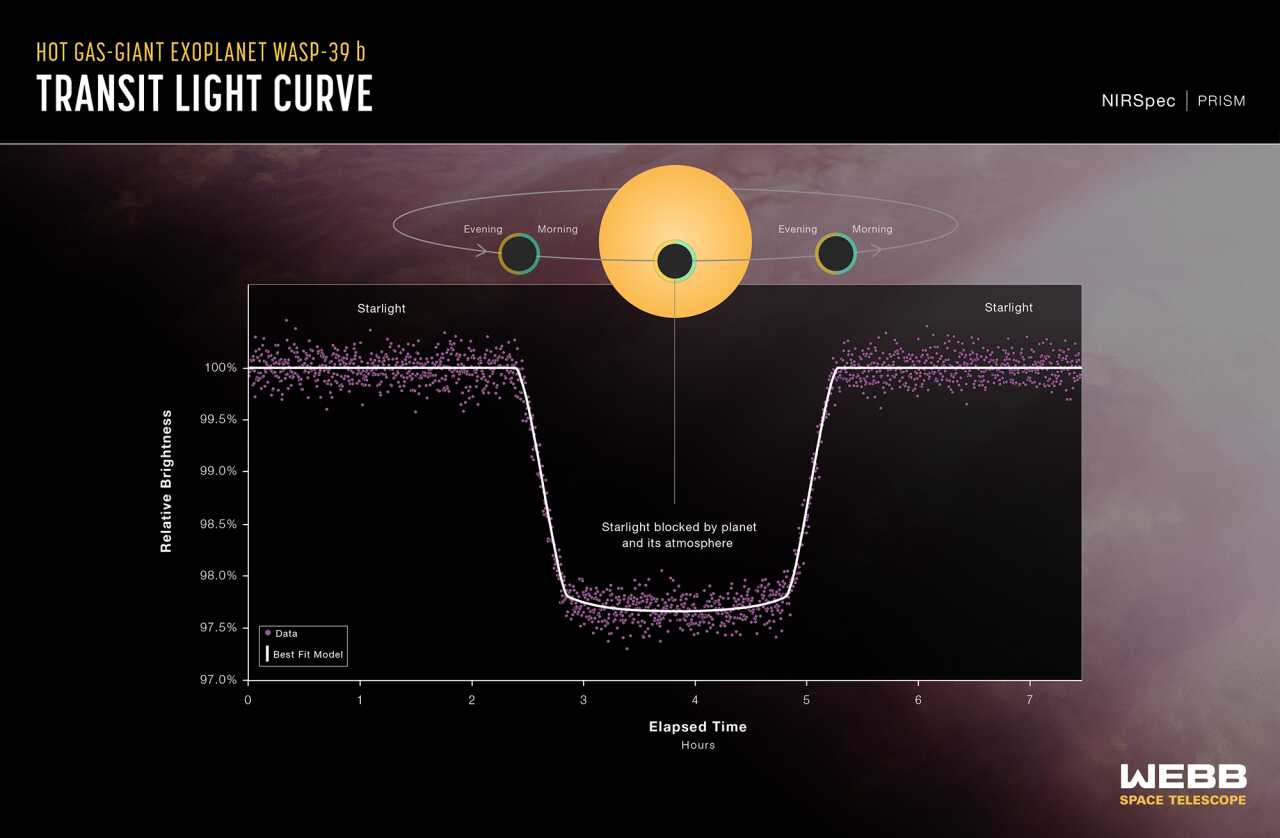THE LATEST
NASA's Webb explores the beauty of the Universe by capturing majestic sunrises, sunsets on distant worlds

As humanity continues to explore the mysteries of the cosmos, the James Webb Space Telescope, a marvel of human innovation, continues to astound us with its profound discoveries. Among its latest revelations is the investigation of eternal sunrises and sunsets on a distant exoplanet, shedding light on the breathtaking beauty that exists beyond our own world. Through intricate supercomputer modeling of the captured data, scientists are unraveling the wonders of this alien landscape, inspiring us to contemplate the infinite possibilities that lie beyond our own celestial neighborhood.
The focus of Webb's attention is WASP-39 b, a massive exoplanet located around 700 light-years away from Earth. This huge planet, with a diameter 1.3 times that of Jupiter and a mass similar to Saturn, orbits its parent star in a way that one side always faces the star while the other side remains in perpetual darkness. This is due to its tidally locked nature.
Astronomers have used the Near-Infrared Spectrograph (NIRSpec), an impressive instrument on the telescope, to observe a fascinating temperature difference between the permanently sunlit and shaded sides of WASP-39 b. Surprisingly, the shaded side, which is in perpetual night, appears to be hotter, registering a remarkable increase of approximately 300 degrees Fahrenheit (200 degrees Celsius). Additionally, there is evidence suggesting different cloud cover, with the sunlit portion potentially being cloudier than the shaded side.
To accomplish these groundbreaking observations, scientists employed a technique called transmission spectroscopy, which involves studying the boundary that separates the sunlit and shaded sides of the exoplanet, known as the terminator. By analyzing the starlight passing through WASP-39 b's atmosphere, scientists can obtain crucial information about its temperature, composition, and other properties. The data obtained from this method highlights the sensitivity and stability of the James Webb Space Telescope, enabling scientists to detect tiny variations with unprecedented precision.
This discovery has made WASP-39 b a key planet for studying exoplanet atmospheres with the Webb telescope. The planet's large, expanded atmosphere produces a very strong signal when starlight passes through it, providing a wealth of information. Scientists have been able to distinguish between the morning and evening regions of the planet, revealing details that were previously unknown.
By analyzing extensive supercomputer models accompanying these observations, scientists have gained insights into the structure of WASP-39 b's atmosphere and its cloud cover. They have confirmed that the movement of gas around the planet plays a crucial role in the significant temperature difference between morning and evening. This is caused by hot gas from the dayside rushing through an equatorial jet stream to the cooler evening side, leading to extreme temperature variations, air pressure differences, and high wind speeds, possibly reaching thousands of miles per hour.
The comprehensive modeling provides a holistic understanding of the atmospheric dynamics of this exotic world, similar to the intricate simulations used to forecast weather patterns on Earth. This new knowledge encourages further exploration into the complex interplay between cloud cover and temperature, unraveling the subtle mechanisms behind the eternal sunrises and sunsets on WASP-39 b.
Beyond the breathtaking beauty of WASP-39 b, there is a profound realization: our universe is full of wonders waiting to be discovered. The James Webb Space Telescope, with its remarkable capabilities and human ingenuity, offers a glimpse into the vastness of space. By embracing diverse viewpoints and unlocking hidden science, we become pioneers in the pursuit of knowledge, driven by inspiration and limitless possibilities, pushing the boundaries of human exploration.
As we embark on this cosmic adventure, we find ourselves humbled by the magnitude of the universe and its ability to captivate our imaginations. The exploration of distant worlds, through supercomputer modeling and keen observation, leads to groundbreaking discoveries. Beyond the cold, dark void, the universe invites us to broaden our perspectives, dream of what lies beyond the stars, and explore the remarkable tapestry that weaves together celestial marvels.
In the ongoing quest for understanding, the James Webb Space Telescope stands as a testament to humanity's insatiable desire to unravel the mysteries of the universe. Through its lens, we catch glimpses of eternal sunrises and sunsets on distant worlds, igniting our collective imagination and inspiring generations to reach for the stars.
